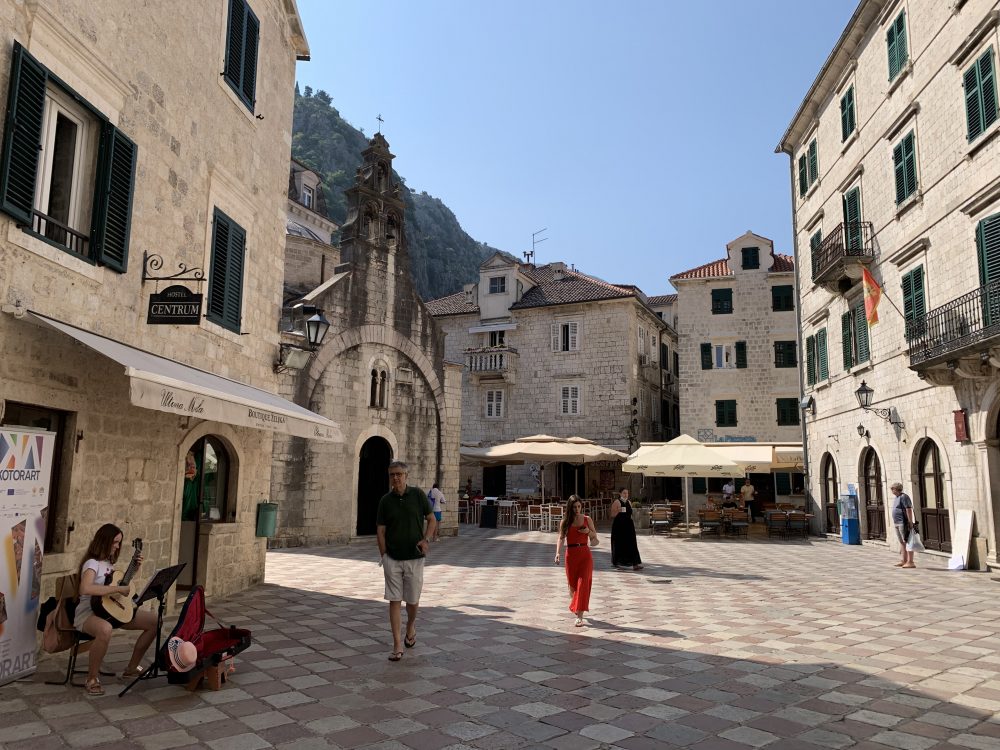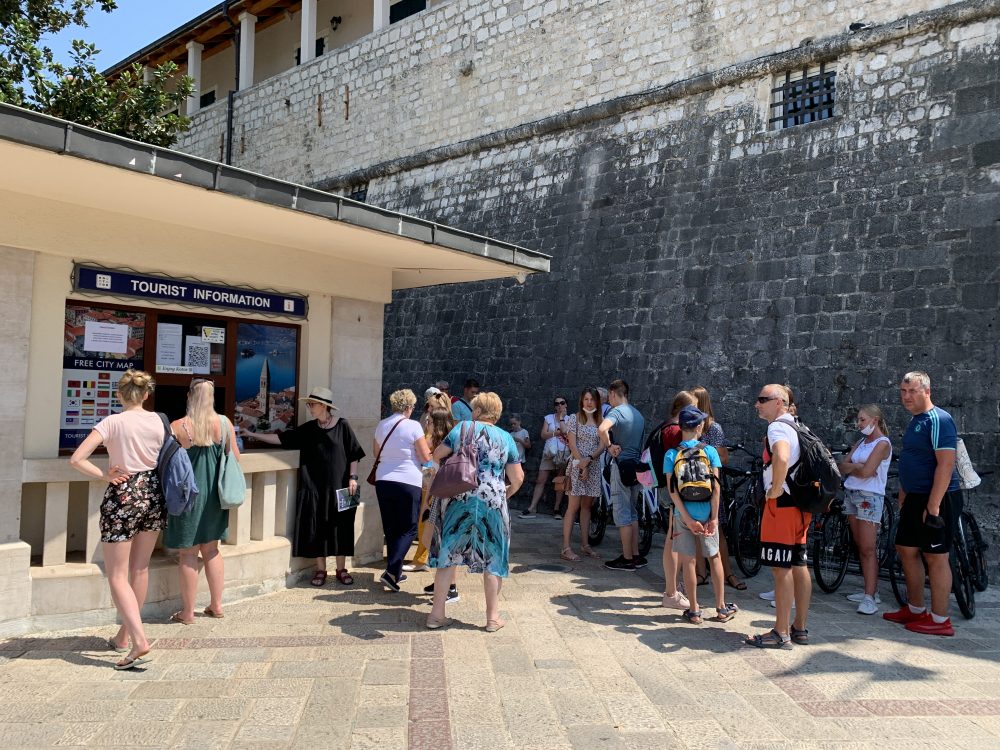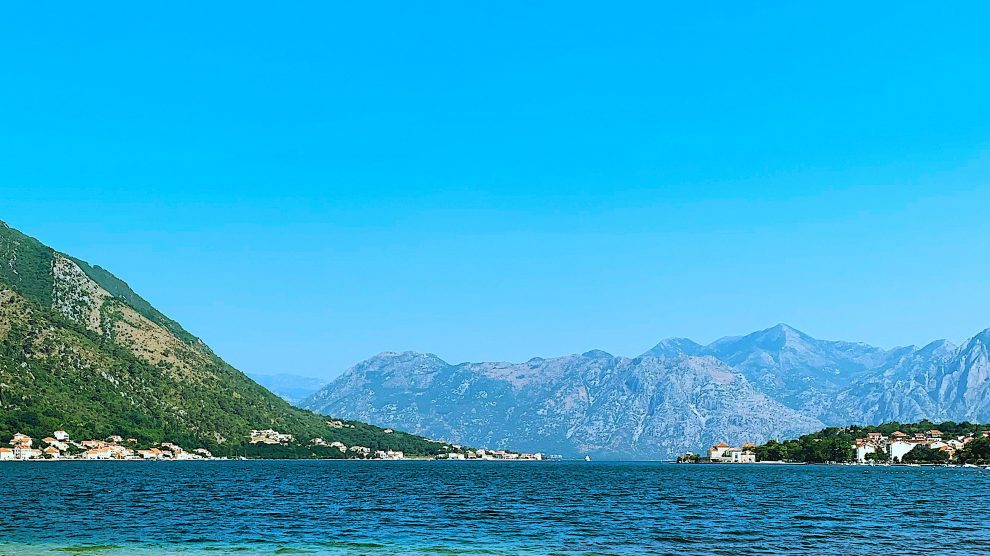A walk around the superb medieval city of Kotor in Montenegro suggests it’s business-as-usual for the country’s lucrative tourism sector. But for how long?
Huge yachts flying flags of convenience currently dominate Porto Montenegro, the Monaco-on-the-Balkans harbour in the bay of Kotor.
Their owners are unlikely to be natives of the Bahamas or the British Virgin Islands, although their money, some of it also no doubt spent at the luxurious shops and restaurants that line the impressive yet ultimately soulless port, may be familiar with those tax-friendly locations.
- Six of the best: Baltic beaches
- Montenegro’s problematic census
- As Montenegro reforms, help us achieve our EU goal
By and large, the yachts at Porto Montenegro are not pleasure boats. They are veritable ships that require large crews and likely cost hundreds of thousands of euros per year to operate. The cost of their construction no doubt ran into the tens of millions.
Less well-heeled but no less elegant tourists (such as your correspondent) make for Kotor, the charismatic small town on the other side of the bay that shares its name.
Like the yachts at Porto Montenegro, they too have returned in large numbers this summer.
Last year, Montenegro suffered one of the sharpest falls in GDP of all countries in Europe – 15.2 per cent. This year, the country’s economy is forecast by the International Monetary Fund to grow nine per cent.
Much of that will depend on the success of the current summer season.
The early signs are good.
Dejan, who owns the apartment in which I’m staying, says that while last year was a total write off “when the Covid-19 transmission rate was high in Podgorica I lived here with my family for nearly six months, nobody wanted to rent the place anyway”, this year is very much business-as-usual.
“The apartment is fully booked until the beginning of September. You were lucky to get it,” he says, before heading off to clean the swimming pool which overlooks the bay.

—
The chic old town of Kotor, a UNESCO-listed site, offers further signs of life returning to normal.
Face masks are a requirement when entering shops, but the rules are not strictly enforced. Only in supermarkets do staff yell at customers who fail to comply.
It’s also worth mentioning that at the country’s border with Albania, which I passed through a few days ago, nobody was asked for a Covid-19 certificate of vaccination, recovery, or negative test, despite such things – in theory – being compulsory for visitors. (Indeed, having crossed three borders in the past week I have – somewhat disappointingly – yet to be asked for my shiny new digital Covid certificate).
Back in old Kotor, the narrow streets, lined with elegant stone buildings dating from its time as part of the Venetian Republic (1420 to 1797) need to be explored early to avoid the many thousands of visitors from across the Balkans and beyond. Cafes and restaurants are again thriving.
Even the buskers have returned, as have the hawkers on the dock selling boat trips to the Blue Cave on the Lustica Peninsula.
“Do you have spaces on the 2pm departure,” I ask one.
“Sorry, it’s sold out,” comes the reply.
It’s sold out are words I had not expected to hear this summer.
At a sea food farm a short drive along the seafront, which serves mussels, oysters and sea bass with wonderful homemade wine for a pittance, I waited almost an hour for a table. It was worth it.
With temperatures well above 30 degrees Celsius however, few visitors are brave enough to walk the Old Kotor Fort Trail to the ruins of the San Giovanni Castle that overlooks the town – a tough climb even in more comfortable weather conditions.
The views from the castle are said to be the most spectacular in all of Montenegro: I can believe the claim but can’t, alas, confirm it. A two-hour hike in searing heat is currently beyond me.

—
Besides, the views of the bay from sea level are no less spectacular. Kotor really is one of the most picturesque places in all the Balkans, and its return as a leading visitor destination after a grim year is welcome.
How long the return to normal will last is anybody’s guess.
Montenegro has fully vaccinated around a quarter of its population, and cases of Covid-19 are currently at their lowest levels for more than a year.
One Ukrainian visitor I spoke to on Thursday however voiced all our concerns when he said that he had felt compelled to travel now, as a new wave of the pandemic could hit the region at any time.
“I wasn’t planning on a holiday just yet,” he said, “but something kept telling me that I shouldn’t waste this window. It could slam shut again anytime soon.”
That could spell disaster for Montenegro’s tourism-reliant economy. If there is to be a new wave of Covid-19, Montenegro – and other countries in the Balkans who rely on foreign tourists – will be hoping it doesn’t arrive until the autumn.
Unlike many news and information platforms, Emerging Europe is free to read, and always will be. There is no paywall here. We are independent, not affiliated with nor representing any political party or business organisation. We want the very best for emerging Europe, nothing more, nothing less. Your support will help us continue to spread the word about this amazing region.
You can contribute here. Thank you.



Add Comment